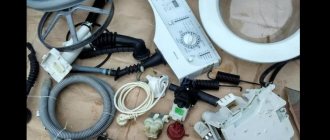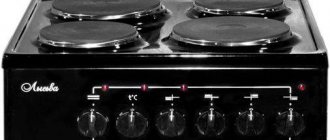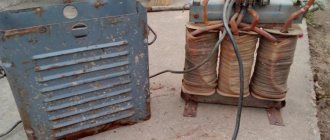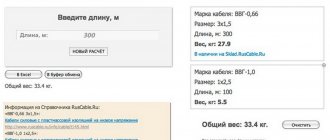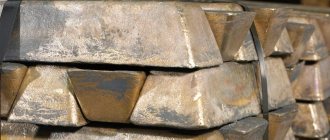Any device breaks down over time. The pressing question is how to dispose of it. The shelf life of washing machines is also not infinite.
Since the washing machine contains an impressive amount of valuable metal elements, it makes sense to disassemble it down to the screw and sort it into components.
The most valuable are, undoubtedly, non-ferrous metals, primarily copper. How much copper can be extracted from an old automatic washing machine, such as Oka, Siberia or Samsung, where it is located and how best to get it - these questions occupy many craftsmen.
A wide range of metals are used in the production of these washing units:
- stainless steel;
- cast iron;
- aluminum;
- brass;
- copper.
There are even small amounts of silver and gold. The most valuable non-ferrous metal, in terms of its profitability, is copper.
How much copper is in a washing machine
Each washing machine has an approximate service life.
With intensive, everyday use of the washing machine, the operating period will be about 8 years, with less frequent and gentle use - 15 years. In addition, every year more and more functional and modern washing machines are produced, so even with normal operation, sometimes you want to replace the machine. What to do with an old machine that has become unnecessary as a result of breakdown or obsolescence? You can simply move the device to a landfill, but this option is not suitable for business users. The unit can be disassembled, some parts can be left, some can be sold, and the rest can be turned over for metal. Let's figure out how much copper can be detected in a washing machine. Article on the topic: Where is inexpensive repair of electrolux washing machines
Connection and launch
When dismantling the electric motor from the washing unit, it is recommended to make special marks on all its wires. These steps will help you connect the motor directly to the electrical network in the future (this is especially true for asynchronous electric motors from old washing units, which require connecting starting capacitors). Other types of motors also have their own characteristics.
Therefore, to correctly connect each type of electric motor, it is best to search for information on the Internet or use special reference books for this. And if during dismantling all contacts were marked, then starting the motor from the washing device will not be difficult. To do this, you just need to follow the instructions for connecting a certain type of engine to the network and adhere to safety rules.
Looking for copper in an old machine
First of all, I would like to clarify that the machine contains little copper. Therefore, before you start disassembling the device, compare the cost of personal time and the amount of potential earnings. Firms involved in the purchase of non-ferrous and ferrous metals offer about 360 rubles per kilogram of copper. Inside the electric motor you can find from 0.7 kg to 1.2 kg of copper wire, that is, disassembling the motor will cost you about 250-400 rubles. In addition to the engine, you can find copper in cables and microcircuits, but there is very little of it in these elements.
If you look closely, you can find particles of gold in the parts of the washing machine, but they are so small that it is impossible to extract the precious metal at home. When you roughly understand how much revenue you can get from handing over copper wire, you should decide whether it is profitable to disassemble the automatic machine or whether it is preferable to hand over it entirely.
Is it worth the time?
It’s worth mentioning right away that it’s unlikely that you’ll be able to get rich using copper from a washing machine. Before taking on this venture, determine for yourself whether it is worth spending your time and energy on it.
It is better to hand over copper at points where both non-ferrous and ferrous metals are accepted. On average it costs 360 rubles/kg. Different electric motors contain about 1 kg of copper +/- 300 grams. Having disassembled the engine, you will earn about 250-400 rubles. Copper and even gold are also contained in other parts of the SM (wires or electronic elements), but in extremely small quantities.
What is the most profitable way to sell inoperative equipment?
The ideal solution would be to sell the washing machine not for scrap, but to sell its individual parts. This option is suitable if you have a fairly running model of the unit, and the main elements of the system remain intact: the drain pump, motor, main control module and others. You can remove the components yourself and resell them to craftsmen involved in the repair and restoration of SMA .
If you don’t have time to bother with disassembling, you can use the services of special companies that buy and remove washing machines. Depending on the model and serviceability of your car, resellers can offer you 500 rubles or more. The advantages of this method of marketing washing equipment are obvious:
- reselling the washing machine for spare parts will be more profitable than selling it for metal;
- personal time and effort are saved, since the main work is transferred to someone else’s shoulders;
- You won’t have to drag the machine across the floors yourself – the resellers called will do everything themselves.
Thus, instead of searching long and hard for copper in the engine, you can simply sell the machine in parts. Perhaps this method will have even greater profitability.
Alternative uses for an old typewriter
We suggest considering all possible ways to get rid of equipment that has become unnecessary. There are quite a lot of them. Some sales options allow the owner to receive income, while others, on the contrary, involve additional costs. How can you “free yourself” from the machine gun.
- Dispose of the unit according to all rules. Household appliances are transported to a separate landfill; before this, the devices are finely crushed using a special apparatus. This method is unprofitable, since you will have to pay about 2 thousand rubles for the services of the carrier and the procedure for recycling the washing machine.
- Place a sale ad on a classifieds website or in a newspaper. This method is applicable if the machine is functioning properly. Having offered the unit for little money, about one and a half to two thousand rubles, there is no doubt that many people will respond who want to buy it.
- Take it to a hardware store. Many large sellers from time to time carry out an interesting promotion “We exchange old equipment for new ones.” By handing over your unwanted washing machine to the store, you will get a good discount on new equipment. This method can be the most profitable of all.
Article on the topic: How long does it take to repair washing machines?
The most economical and savvy owners can transform the washing machine into necessary and useful things in the household. You can give a “second life” to a machine drum by using it to build a filter for water purification, a barbecue grill, a barbecue oven, or a small concrete mixer. The electric motor can be used for a homemade wind generator, lawn mower, wood splitter, grain crusher and more.
To disassemble an automatic washing machine and build useful devices from the parts, you will need to have some free time. In addition, you need to have “golden hands”, because reviving parts will not be easy. However, you should not underestimate the potential of SMA components either.
Washing appliances with a depth of more than 50 cm
There are many washing machines with a load of 8 kilograms. The dimensions are equal: width - 60 centimeters, height - 85 cm. Standard depth - 55 cm. They can spin clothes and have 13 or more programs. Drum volume is more than 50 liters.
Automatic washing machines with these parameters weigh:
- LG F1096TD3 - 62 kg;
- Samsung WW80J5545FX - 61 kilograms;
- Whirlpool AWOC 0714 - 68 kg.
Among the machines with a depth of about 60 centimeters, there are models with a maximum load of ten kilograms. The width of such models is 60 cm, the height is 85 cm. These devices have a modern design and many additional functions: steam treatment, self-cleaning function. The Samsung and Elgie models can be connected to a smartphone. This will allow you to start the wash remotely or change the program without leaving the couch or while on the road from work.
The weight of front-loading automatic washing machines with a maximum load of laundry of 10 kilograms is:
- LG F4J9JS2S - 68 kg;
- Samsung WW10M86KNOA - 83 kg;
- Hotpoint-Ariston RZ 1047 B EU – 75 kg
Sell your washing machine for scrap
Washing machine for scrap metal. Unfortunately, nothing in our world lasts forever. This also applies to household appliances, and in particular washing machines. Statistics show that the average lifespan of a washing machine is 5–8 years, taking into account intensive everyday use. Often repairs will be quite expensive, and no repairman will give you a guarantee. It’s easier to buy a new car, and an old one... But where to put the old washing machine? More details below.
To watch online, click on the video ⤵
Washing machine Malyutka. How much copper is in it? More details
HOW MUCH COPPER IS IN A WASHING MACHINE MOTOR. More details
Disassembly (repair) of the Malyutka washing machine Read more
8.4 kg of Aluminum from Siberia! Copper and Brass. More details
Malyutka washing machine repair Read more
Dismantling the engine from a washing machine for metal Read more
Washing machine "Malyutka" disassembly and engine test Read more
Analysis of the electric motor from the “baby” washing machine Read more
Washing machine business. Profit from dismantling old Soviet washing machines Read more
DISASSEMBLY OF AN ELECTRIC MOTOR FROM A WASHING MACHINE / HOW MUCH COPPER. More details
We disassemble the washing machine. Part 1. Rough disassembly. More details
Copper-copper and non-ferrous metal in a Soviet washing machine. Dismantling a washing machine for scrap Read more
We make money on the Old Washing Machine! More details
How much copper and aluminum is in a USSR washing machine? More details
Big showdown. Washing machine and stove for non-ferrous metal! More details
Copper in the Elite and Ayuko washing machines is an unusual design Read more
Washing machine without copper. Incredible. More details
USSR washing machine. How much non-ferrous metal? More details
I disassembled the Indesit washing machine. What can you profit from!? Scrap metal. More details
Source
Various options
There are several ways to get rid of your old machine:
- Dispose of as household appliances. It must be said right away that this option will cost you 1500-2000 rubles. The fact is that household appliances are disposed of in special landfills, after being shredded. The funds will be used to pay for transportation and the processing service itself.
- Place advertisements in a newspaper or on the Internet. There are a large number of people who want to take away their old washing machine. You can consider selling it (if the machine is in good condition) or giving it away for free.
- Return it to the store. Of course, we are not talking about returning it. Many household appliance stores hold promotions in the “Change new for old” format.
- Donate a car to an orphanage. If your washing machine is still operational, you can donate it to an orphanage. As a rule, such institutions always need help.
- Sell your washing machine for scrap.
Article on the topic: Which Atlant washing machine is better
In fact, the latter method is most often used - washing machines are sold for scrap. This is due to the fact that most old cars are thrown away due to malfunctions and it is impossible to sell or donate them. Then scrap metal collection points come to the rescue.
Significant advantages of vertical machines
Top-loading washing machines open not from the side, but from the top, and this is the reason for the controversy with supporters of front-loading models. Many people think that the lack of an additional “shelf” or “table” in the bathroom is a serious omission. True, manufacturers of front-facing models do not recommend placing anything on the surface, since small objects constantly fall to the floor during the spin cycle, and large ones can deform the panel, but in practice, most owners use the additional space to store powders, shampoos or towels.
Seriously speaking, it is difficult to find any shortcomings in a vertical washing machine. It is much better protected from leaks, which often occur in frontal models due to deformation or damage to the cuff. If you forget to put a T-shirt or robe in the drum, you can simply pause the machine and add items without waiting for the wash to finish.
The ergonomics of the models is admirable. To load laundry into the tank or get it out, you don't have to squat or bend over. This is very important for older people, pregnant women and those who suffer from diseases of the musculoskeletal system. However, others will also appreciate this undoubted advantage.
In terms of the number of modes, top-loading washing machines are not inferior to their eternal competitors. They have programs for quick washes, delicate cycles for silk and delicate fabrics, powerful long cycles for cotton items and much more. Spinning is carried out at high speeds, so that things dry quickly after being removed from the drum.
Another significant plus is the reduced number of drum-related breakdowns. The design of vertical washing machines is designed to withstand heavy loads, and the tank is mounted more securely, so problems arise less often.
The disadvantages include higher cost. You will have to pay 20-30% more for a top-loading washing machine, but the difference will be well worth it due to the durability of the equipment. The second drawback is the not very wide range of models. In the catalogs of well-known brands you can usually find several washing machines of this type, while less famous manufacturers sometimes have only 1-2 models. It will not be possible to build the machine under the sink or countertop, but this is not necessary, since it will not be difficult to find a place for the equipment.
Compactness
The body dimensions of vertical washing machines are smaller than those of front-facing ones. With the same maximum load, you will get a significant gain in floor space. Since the door opens upward, equipment can be safely placed in a narrow passage: taking things out and putting them in will be convenient.
Good maximum load
We have already mentioned that top-loading washing machines have a higher capacity than front-loading models. Their drum can hold from 3 kg (for compact wall-mounted or tabletop models) to 8 kg of things.
It is not recommended to exceed the maximum load level of a particular washing machine so that the equipment does not break down. Some models are capable of weighing laundry and even beeping when overloaded.
Reloading laundry
The most important advantage of top-loading washing machines is the ability to reload laundry. With the best branded models, all you have to do is pause the wash. The electronic control system will “park” the drum so that its door is at the top. All you have to do is open it, add items, close the washing machine and resume the program.
This function is very convenient, because with its help you can first wash items made of thick fabric, and at the end add light and delicate wardrobe items made of silk, chiffon, lace.
Selling a washing machine for scrap
So, you've decided to sell your old washing machine for scrap. Initially, you need to decide how to deliver it to the collection point. This can be done in several ways:
- Take it out yourself. In this case, you will need to either independently or with the involvement of friends or acquaintances, load the old washing machine into the car and deliver it to a scrap metal collection point. When choosing this option, it is worth considering that there will be fuel costs. It is also necessary to ask someone for help.
- Use the company's services. By choosing this option, you won’t have to carry anything anywhere. The service will send a special car with loaders who will independently deliver the old washing machine to the collection point. It is worth noting that there is an additional charge for this. As a rule, the money received for the machine is enough to cover these expenses, but you are unlikely to make a profit.
It is impossible to clearly identify the best method. Both options have the right to life.
We rent by total weight
Ferrous metal collection points accept cars for scrap by their total weight. As a rule, you won’t be able to get a lot of money out of this, but you can still get something. First, the owner of the machine needs to decide how to deliver the product to the collection point. There are two options.
- On your own, that is, either alone or with the help of friends, relatives or acquaintances. You need to load the car into your own car and take it to the delivery point, where an employee will take it from you and give you money. In this case, you will only spend money on gasoline, and the benefit depends on how long it takes you to drive to the nearest scrap metal.
- In the second case, you can use the services of a special company that will bring a car with loaders to your home. They will take the unit themselves and load it into the car, and then take it to the scrap collection point. Very convenient and comfortable, but, nevertheless, not free. There is a high probability that the money raised will only cover transportation costs, but nothing more.
It is difficult to say unequivocally which option is most acceptable. Both have a right to exist. Now you need to calculate how much money you can earn by renting out one average washing machine. The price of the product on the metal market will depend directly on the weight of the unit . Considering that the body is made partly of plastic, counterweights play a major role. Thanks to them, the washing machine can reach a weight of 50 to 70 kilograms. The purpose of the parts is to keep the washer from moving excessively during operation.
Important! In most washers, these parts are made of concrete, although there are particularly rare models with cast iron counterweights. Therefore, if you are lucky enough to be the owner of just such a car, then you can earn some good money.
But, of course, concrete counterweights are not accepted for scrap metal. Therefore, their weight must be subtracted from the total weight of the washer. Thus, in Moscow the price per kg of ferrous metal is about 12-15 rubles. A machine with cast iron counterweights can bring from 840 to 1050 rubles. But a model with concrete components will weigh 20-30 kilograms and can bring the owner only 360-600 rubles.
How much money if scrap metal?
The price at which you sell your washing machine directly depends on its weight. On average, washing machines weigh from 50 to 70 kg. The main mass of the machine is provided by counterweights.
Article on the topic: Is it possible to wash trekking boots in a washing machine?
Counterweights are elements that artificially weight a washing machine. They are hung in order to add more weight to the washing machine, to prevent it from swinging during the washing process. Made from concrete.
As it has already become clear to you, counterweights are of no interest to scrap metal acceptors. The metal itself in the machine is no more than 20–30 kg (depending on the model). On average, the price in Russia ranges from 4 to 9 rubles per kg. The highest price is presented in the capital and region, and as you move away, the price decreases. Having carried out simple mathematical calculations, we find that you can get 80–270 rubles for a washing machine. This is quite meager money, which can only cover the cost of removing the washing machine. And always remember about contamination! The washing machine will be clogged at about 10%, i.e. from the price or weight you
Types of engines
The type of electric motor chosen for homemade products depends on the age and model of the washing machine. For example, if it was an old washing machine dating back to Soviet times, then it most likely had a reliable asynchronous electric motor installed. This washing machine motor has a power of 180 W, has excellent torque and is the most convenient motor for homemade products. Also in the hands of the master may be a two-speed electric motor, a commutator motor or an engine from a modern SM of any model and class.
Asynchronous motor
Asynchronous electric motors used for washing units can be of two or three phases. But since about 2000, the production of two-phase motors has practically ceased, and they have been replaced by more modern three-phase motors with frequency-controlled rotation speed.
Such a device consists of a stator, which is a stationary element of the electric motor, and a rotor that drives the drum of the device.
The advantage of this device is:
- In a simple design.
- Ease of maintenance.
- In low noise level.
- At low cost.
Disadvantages include large size, low efficiency, complexity of the electrical circuit and its control. Such electric motors can still sometimes be found in old, inexpensive models of washing machines. They are not used in powerful modern devices.
Brushed motor
Such electric drives have been used since the 90s and are considered almost universal due to the ability to connect them not only to alternating voltage, but also to direct voltage,
The electric motor has an aluminum housing in which a commutator rotor, stator and block with contact brushes are built.
Advantages of a commutator motor:
- Small sizes.
- Smooth speed control by increasing or decreasing voltage.
- Ability to work with different types of voltage.
- There is no connection to the frequency of the electrical network.
The disadvantage is expressed in the frequent change of contact brushes and short service life.
Inverter drive
This is a direct drive motor, also called an inverter motor. It does not have a commutator rotor. Developed by the Korean company LG and belongs to the latest technologies. Mass production of inverter drive motors began in mid-2005. Thanks to their reliable, durable and simple design, they firmly hold a leading position in the electric drive market.
The advantages of the inverter drive include:
- Compactness.
- Low vibration level of the machine.
- High efficiency
- No contact brushes or belt drive.
- Almost silent operation.
The disadvantage of inverter motors in the form of complex electronic control circuitry is more likely to affect manufacturers than consumers,
Non-ferrous metal in a machine. Is it worth disassembling?
In the “heart” of the washing machine - in the electric motor - there is a little copper. About 200–300 gr. A kilogram of copper costs about 200 – 240 rubles/kg. Therefore, you can get an additional 70 rubles for the winding.
You can also sell the drum separately - it is made of stainless steel. Its weight, depending on the model and machine, ranges from 2.5 to 5 kg. For 1 kilogram of “stainless steel” at a recycling collection point you will be offered 50–60 rubles. So it turns out that such a drum will add an extra 100-300 rubles to your wallet.
Article on the topic: How to fix a washing machine faucet
If you decide to scrap a “smart” model, then there will also be a few grams of copper in the processor. But the process of fishing it out of the processor is quite labor-intensive. And it is quite impractical to get copper from there, due to its low content.
We can conclude that you can disassemble a washing machine, but only if you have a desire to earn a few hundred more and an hour of free time.
Which one is better to choose?
Which is better: a light or heavy machine? If weight is important to you when choosing a washing machine, consider the following information. When the full washing cycle approaches the spin mode, the speed increases to the maximum and the unit begins to vibrate. If the washing machine is light, then it can not only shake and vibrate, but even jump at the installation site. In this case, counterweights are not always able to save the situation, especially in case of incorrect installation.
When choosing a washing machine, focus on weight in the range of 55-80 kilograms. Such devices are quite stable and practically do not vibrate, unlike lightweight options.
There are many questions that arise before purchasing a washing machine, as there are countless options on the market. The models differ not only in design and functionality, but also in weight. To answer the question “how much does an automatic washing machine weigh”, you need to take into account more than one factor. Let's take a closer look.
The weight of the washing machine plays an important role, although you may not always think about it. For example, if you do not have permanent housing or are forced to move frequently, then choosing a lighter model will be an irreplaceable help for you in the future.
What factors does weight depend on?
Different models may differ in weight by up to 10 kg. The final weight is influenced by the body, drum volume, installation option, and additional functions. Also, do not forget about the counterweights that are used to balance the drum.
Just imagine how 5 kg spins in a drum at a speed of 1000 revolutions per minute, and incorrectly distributed laundry on the surface creates a problem; to eliminate the imbalance, balancers are used.
Without balancers, your washing machine would go on a trip with your things, although not for long; stabilizers won’t last long. The balancer itself resembles a small concrete block, but the shape and size of the counterweight depends on the specific manufacturer and the material from which it is made.
To select the appropriate model you need to determine:
- Place (measure width, depth and height);
- Select the type of machine (vertical or horizontal loading type).
The lineup
The model range of automatic machines is divided into two main types of frontal and horizontal loading, and after that each type is divided into subtypes. For convenience, a classification has been compiled.
Full size model
The height of a full-size model is from 85 to 90 centimeters, the width is from 60 to 85 centimeters, the depth of this model is 60 cm. The permissible load of laundry weighing up to 7 kg.
Narrow model
The standard height of the narrow model is 85 cm, the width is no narrower than 60 cm, and the depth is up to 40 cm. Single loading capacity is up to 5 kg.
Miniature model
The standard height of the mini-machine is 85 cm, the width is no more than 60, and the thickness is 5-7 centimeters less than the narrow model and reaches 32 cm. The maximum load of laundry is 4 kg.
Compact model
The height of the compact washing machine is 85 cm, width 60, depth 44, and the entire load of laundry is max 3.5 kilograms.
Built-in models
The height of built-in models may differ from the standard and varies up to 82 cm, width about 60, depth 55, and the maximum load can reach 5 kg.
Large vertical models
Height up to 1 m, width 0.4 m, depth 0.6 m, but the capacity is simply amazing at 7 kg.
Standard vertical model
A standard vertical loading machine has a height of 0.6 to 0.85 m, a width of 0.4 m, and a depth of 0.6 m. Normal loading is about 5.5 kg.
Standard weight
The approximate weight of an empty washing machine ranges from 55-75 kg. Statistics are taken from open sources of the most popular washing machine models.
In the video you can see more accurate information
How to choose
For small bathrooms, it is better to choose narrow models with vertical loading. Be aware that in order for narrow models to create less vibration during spinning, manufacturers specially make them heavier.
By the way, a new auto-balancing function has appeared on the washing machine market. It works on the principle of regulating the rotation speed of the drum, which reduces vibration noise.
Heavy or light?
A non-standard thought rarely comes to buyers, but those who are interested cannot sleep at night for quite a long time until they find the answer.
There are myths that a lightweight washer will be unstable due to lack of weight. This opinion appears when you look at the spinning process and are amazed that she can do this, but you can’t.
By choosing heavy machines, you expose yourself to great inconvenience; it’s inconvenient to carry onto floors, moving from place to place is beyond the power of one woman, and when spinning, such a machine can hurt you.
Selling a washing machine for scrap - how much will we get?
According to statistics, the average service life of a modern washing machine is limited to a period of 5 to 8 years. When purchasing a new unit of household appliances, the relevant question is where to put the old unit. Depending on the condition of the old washing machine, there are several options for solving the problem.
- It is easy to sell serviceable but obsolete equipment through free classifieds sites on the Internet with the obligatory condition of self-pickup.
- You can give away a faulty washing machine for free by posting a corresponding advertisement on the Internet.
- Use the services of a company for recycling large household appliances. Typically this service is provided for a fee. A fee will be charged for transportation and subsequent disposal of the unit.
- Take it to a large hardware store as part of a special promotion aimed at recycling old appliances. In this case, the responsibility for delivering a unit of household appliances to the sales floor falls on the owner of the washing machine.
Article on the topic: Is it possible to wash membrane shoes in a washing machine?
Owners of an old household appliance receive the maximum benefit by handing over the washing machine as a secondary raw material to a scrap metal collection point.
How to sell a washing machine for scrap
There are several ways to recycle household appliances as secondary raw materials. The simplest of them would be to contact a specialized company that provides relevant services on a paid basis. In this case, it will not be possible to make a profit; the proceeds from the scrap will be completely spent as a service fee.
You can independently deliver the machine to a scrap collection point and hand it over entirely. This option will require the involvement of movers and delivery costs. At the same time, it will be possible to hand over it in total weight at the price of scrap ferrous metals, taking into account the high percentage of blockage. Considering the low cost of ferrous scrap, the benefit from such a deal will be minimal. The amount of profit in this case directly depends on the total weight of a unit of household appliances.
It should be noted that modern units have a plastic body and are not taken into account. The main weight of the device falls on the counterweights, which hold the machine in place during operation. It ranges from 50 to 70 kg. A counterweight was made in the washing machine, with the exception of older models, which sometimes used cast iron. Simple calculations allow us to conclude that the revenue from recycling a washing machine with a total weight will be from 350 to 600 rubles. This is at a cost of ferrous scrap of 13-15 rubles per kilogram. A model with cast iron weights will bring about 1000 rubles in profit.
Article on the topic: How to repair Bosch washing machines when they don’t fill with water
Independent dismantling of a household unit will simplify transportation and help extract additional profit from scrap non-ferrous metals.
Stainless steel tank
Stainless steel. A common material for making tanks for washing machines. It has been used for this purpose for quite a long time.
- Reacts well to contact with water - does not rust.
- This tank has increased strength and resistance to mechanical and chemical damage.
- Service life up to 100 years.
- The weight of a stainless steel tank will be greater than that of a plastic tank, so it produces more noise.
- Low thermal insulation of metal requires higher energy consumption.
- High price.
Provided the washing machine is equipped with such a tank, this is perhaps one of the elements that can outlast all other elements of the washing machine in terms of service life. When choosing a washing machine with a stainless steel tank, you should understand the following:
The steel must be of high quality, and the technology of its assembly and soldering is at the highest level. Only under such conditions will the tank really be durable and live up to expectations.
This will immediately affect the price. A washing machine with a stainless steel tank will cost more than, for example, one with a plastic tank.
Therefore, if they offer you a washing machine with a stainless steel tank at a lower price, then it is probably a low-quality unit and its service life will be short.
What non-ferrous metals are contained in the washing machine?
Knowing that you can find valuable things in a washing machine when you disassemble it yourself, you can add a little to your family budget. First of all, you should look for copper in the washer motor. Inside the washing machine there is a fairly powerful electric motor with windings. The weight of copper in a washing machine motor sometimes reaches 2 kg, and they accept it for 360 rubles.
The electric motor of an automatic washing machine also contains parts made of other non-ferrous metals and their alloys (brass, aluminum, zinc). Modern models are equipped with a processor that also contains copper, but in small quantities. And it’s not easy to remove it from the processor. When extracting copper from the inside of a washing machine, you should not forget about the internal wiring and electrical cord with an outlet.
The drum in which the laundry is placed when washing deserves special attention. It is made of stainless steel. Depending on the type and model, the drum of a stainless steel washing machine weighs from 2.5 to 5 kg. At collection points, they give from 50 to 60 rubles per kilogram of stainless steel. Through simple calculations, we can come to the conclusion that the weight of the washing machine drum when dismantling it will bring an additional 100 to 300 rubles into your wallet.
Additionally, when dismantling the washing machine in detail, aluminum, brass, zinc and metal parts can be removed from it.
Article on the topic: How to remove the motor from a washing machine
The average total revenue from disassembling a washing machine yourself will be about 1,000 rubles.
Older Soviet-made models may have a cast iron counterweight or a compact container with lead weights. For this reason, it is advisable to dismantle in detail any, even the oldest unit.
How to remove copper from a device?
Before weighing and calculating the profit, it is necessary to remove the copper from the motor and other parts of the washing machine.
To do this, you need to disassemble the electric motor using special tools : circular saw, sledgehammer, pliers.
First you need to saw and open the body, then cut off the winding.
To form a copper lump, it is appropriate to place small and thin parts on the inside, and strong and thick parts on the outside. If firing was used for extraction, then under no circumstances should the copper be cooled with water, otherwise the metal may crumble.
To properly extract copper from a washing machine motor, use the following algorithm :
- Removing the cover and releasing the fasteners located on the body.
- Removing bearings that are made of metal but do not contain copper. They will be assigned to the group of the corresponding metal.
- Opening the housing and removing the rotor.
- Removing the back cover and dismantling the shaft.
- Performing desoldering connections.
- Removing the copper winding.
Everything that is removed from the case is sorted depending on its composition and type. A pneumatic hammer with a chisel attachment is used to crush the aluminum manifold and electric motor housing. For convenience, copper-containing fragments are cut into small pieces (1.5-2 cm).
To extract aluminum, the rotor is heated to somewhere up to 7000 ̊C, it should be hot for about 1.5 hours, thus completely melting the aluminum rods from the rotor.
To make the process of disassembling the engine go faster, you will need a grinder and a sledgehammer. To gain access to the stator, the motor housing is cut in half lengthwise. You can immediately cut off that part of the copper winding that is visible.
There is also copper in the grooves; to remove it, you should burn the stator for about 90 minutes . Then they take needle-nose pliers and remove the remaining copper from the cooled stator.
If the motor is not very powerful, heating the stator can be done with a gas burner, directing its flame inward.
Once all the copper-containing parts are removed, they are cleaned of any remaining insulation, plastic debris, rubber, and anything else. The use of a pneumatic vacuum cleaner gun is appropriate here.
Only then is the pure copper weighed and its mass determined .
The power of the electric motor determines the mass content of copper. If you work methodically and skillfully, you can extract all the available copper elements, this will increase the chance of getting a higher price for them.
How to turn in profitably
The cost of scrap metal is influenced by several important factors:
- scrap category;
- contamination with plastic, residues of insulating materials;
- presence of corrosion and contamination;
- batch size;
- acceptable prices.
When planning to make a good profit from handing over a washing machine as a secondary raw material to a scrap metal collection point, you need to competently approach this issue.
The unit must be disassembled in detail, and then all removed scrap must be carefully sorted. It is much more profitable to hand over scrap copper and other non-ferrous metals separately than by the total weight.
After spending time and effort on dismantling, it is wise to clean the resulting parts and parts of the internal wiring from the insulating layer, dirt and traces of rust.
After cleaning and sorting the resulting scrap by type and category of metal, it is reasonable to find out the cost of non-ferrous and ferrous scrap metal at several collection points. This will allow you to choose a place where it is easy to sell the resulting scrap at a higher price.
We will sort, sort and hand over
If in the previous paragraph we handed over the machine by total weight, that is, without sorting it into different metals, then in this section you will find a slightly different method. Instead of taking the entire unit to a collection point, you can disassemble it yourself and then sort the parts according to metal categories. For example, almost every machine has massive motors with windings containing up to 2 kg of copper, and in Moscow the price per kg of this metal reaches 360 rubles. You can also find other non-ferrous metals there. In general, you can earn some good money, but keep in mind that you will have to get really confused and spend a lot of time. Information about how much non-ferrous metal is in the washing machine on average:
- 1-2 kg approximately 432 rubles.
- 2 kg of aluminum – 160 rubles.
- 0.2 kg of zinc – 13 rubles.
- 20 kg of iron – 300 rubles.
- 0.1 kg of brass – 20 rubles.
If we add it up, we get around 925 rubles. Of course, this is more profitable than simply giving away the machine with its total weight. But it will take quite a lot of time, and it is still unknown which is more expensive. And, of course, it is obvious that the difference between revenues is quite small. Surely, residents of big cities would prefer to give away the machine for free, just to get rid of it and the hassle associated with it.


